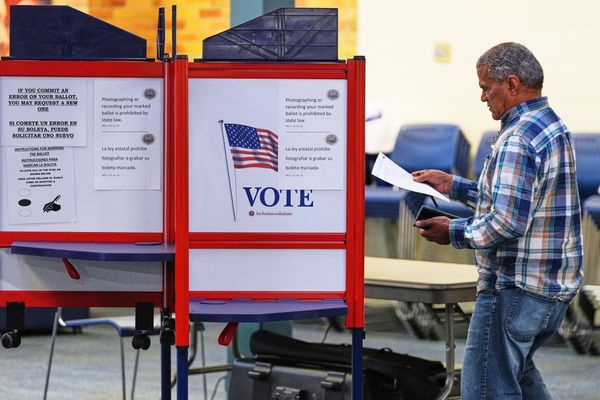
U.S. inflation in July offered a split verdict for policymakers, with cooling headline prices but hotter core readings, fueling market bets on a September Fed rate cut and prompting President Donald Trump to publicly pressure Jerome Powell once again.
- QQQ ETF is moving fast. Check live prices here.
The Consumer Price Index held steady at 2.7% year-over-year, missing forecasts for a slight uptick, but core inflation — excluding food and energy — accelerated to 3.1% from 2.9%, topping expectations.
Trump Renews Pressure On Powell
Following the report, Trump renewed public pressure on the Federal Reserve to cut interest rates.
"Jerome ‘Too Late' Powell must NOW lower the rate… The damage he has done by always being Too Late is incalculable," he said on Truth Social.
Trump also accused Powell of mismanaging the construction of Fed buildings, saying he is "considering allowing a major lawsuit… because of the horrible, and grossly incompetent, job he has done… Three Billion Dollars for a job that should have been a $50 Million Dollar fix up."
Defending his trade policies, Trump claimed tariffs have been "incredible for our Country" and "have not caused Inflation" while generating "massive amounts of cash" for the Treasury.
He indicated that consumers aren't bearing most of the costs, saying companies and foreign governments are "picking up the tabs."
Trump also criticized Goldman Sachs CEO David Solomon over past tariff predictions, quipping that Solomon should "focus on being a DJ" instead of running a major bank.
Economists React To Mixed Inflation Data
Skyler Weinand, chief investment officer at Dallas-based Regan Capital, said the data was "tame enough" to give the Fed the "green light" for a September rate cut of at least 25 basis points, and possibly 50.
"This data, coupled with the weak July employment report, puts the nail in the coffin for lower interest rates," Weinand said. He expects at least two cuts by year-end, framing them as an "insurance policy" against labor market deterioration.
Chris Zaccarelli, chief investment officer at Northlight Asset Management, said the report "did nothing to convince anyone" in the debate over whether tariffs will cause persistent inflation. He sees the Fed moving ahead with cuts unless the final jobs and CPI reports before the September meeting show worrying inflation trends.
Michael Pearce, deputy chief US economist at Oxford Economics, called the rise in core prices "mixed evidence" of tariff effects.
He expects core inflation to peak at 3.8% by year-end as tariffs pass through more fully, keeping most Fed officials on the sidelines for now. But he said another weak August jobs report "could tip the odds in favor of a September rate cut."
Jeffrey Roach, chief economist at LPL Financial, warned that "hotter inflation amid a backdrop of slower growth could signal a stagflation-lite period," but still expects the Fed to cut rates next month given labor market weakness.
Andreas Steno Larsen, founder of Steno Research, described the report as "a bit of a mixed bag of goodies" but "still no major inflation scare as everyone keeps fearing."
He said it was "a very soft report outside of transportation services and medical services" and one that "mostly discards tariff concerns," adding that "it's fair that we see a dovish response."
Futures markets still indicate a 94% probability of a September 25-basis-point cut, with a 64% chance of another in October and near-full pricing for a potential 25-basis-point move in December.
Read now:
Photo: Shutterstock







